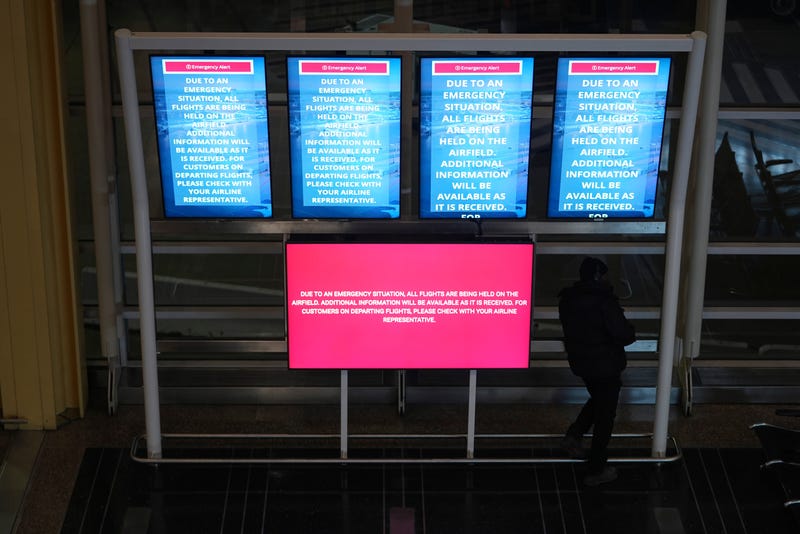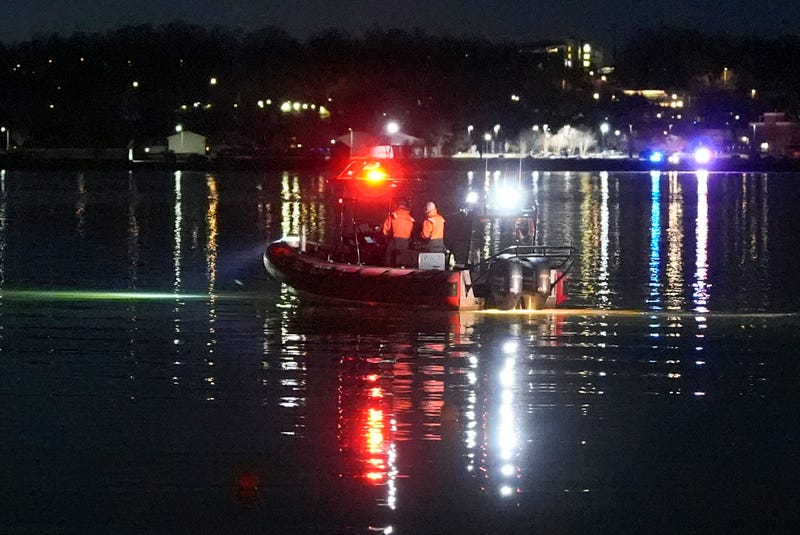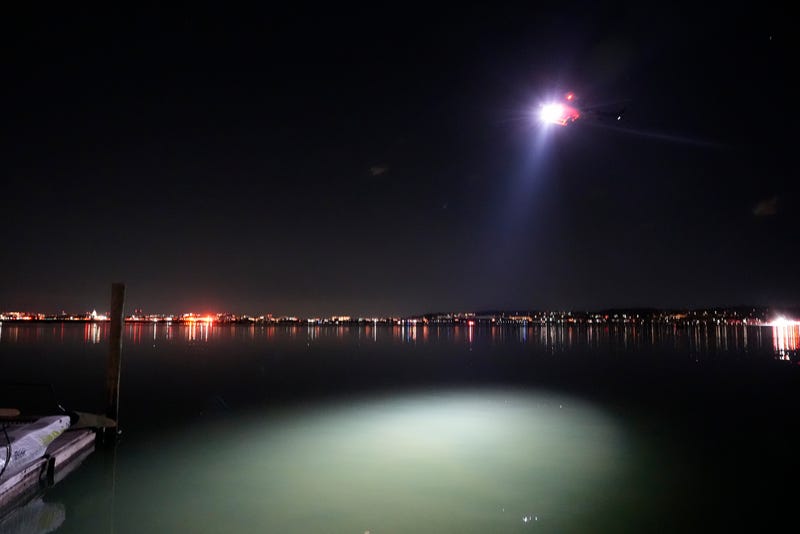
PHILADELPHIA (AP/ KYW Newsradio) — Some flights bound for Washington, D.C. Wednesday night were diverted to Philadelphia immediately after the mid-air collision of a passenger jet and an Army helicopter near Ronald Reagan National Airport.
Philadelphia International Airport received two flights immediately after the crash. One was on its way to the nation’s capital from Chicago, the other from Boston. So far, on Thursday, there have been three cancellations — two departing Philadelphia and a third that was set to leave from Reagan National in D.C.
The American Airlines jet was carrying 60 passengers and four crew members when it collided with an Army helicopter while landing at Reagan National, prompting a large search-and-rescue operation in the nearby Potomac River.
Three soldiers were onboard the helicopter during a training flight, an Army official said.
At least 28 bodies have been pulled from the river so far. Officials said they were still searching for other casualties but did not believe there were any other survivors, which would make it the deadliest U.S. air crash in nearly 24 years.
The body of the plane was found upside down in three sections in waist-deep water. The wreckage of the helicopter was also found.
There was no immediate word on the cause of the collision, but all takeoffs and landings from the airport were halted as dive teams scoured the site and helicopters from law enforcement agencies across the region flew over the scene in a methodical search for bodies.
Passengers on the flight included a group of figure skaters, their coaches and family members who were returning from a development camp that followed the U.S. Figure Skating Championships in Wichita.
Two of those coaches were identified by the Kremlin as Russian figure skaters Evgenia Shishkova and Vadim Naumov, who won the pairs title at the 1994 world championships and competed twice in the Olympics. The Skating Club of Boston lists them as coaches and their son, Maxim Naumov, is a competitive figure skater for the U.S.
The Federal Aviation Administration said the midair crash occurred before 9 p.m. when a regional jet that had departed from Wichita, Kansas, collided with a military helicopter on a training flight while on approach to an airport runway. It occurred in some of the most tightly controlled and monitored airspace in the world, just over 3 miles south of the White House and the Capitol.

MORE: What to know about the collision between a passenger jet and Army helicopter near DC
Investigators will try to piece together the aircraft’s final moments before their collision, including contact with air traffic controllers as well as a loss of altitude by the passenger jet.
American Airlines Flight 5342 was inbound to Reagan National at an altitude of about 400 feet and a speed of about 140 miles per hour when it suffered a rapid loss of altitude over the Potomac River, according to data from its radio transponder. The Canadian-made Bombardier CRJ-701 twin-engine jet, manufactured in 2004, can be configured to carry up to 70 passengers.
A few minutes before landing, air traffic controllers asked the arriving commercial jet if it could land on the shorter Runway 33 at Reagan National and the pilots said they were able. Controllers then cleared the plane to land on Runway 33. Flight tracking sites showed the plane adjust its approach to the new runway.
Less than 30 seconds before the crash, an air traffic controller asked the helicopter if it had the arriving plane in sight. The controller made another radio call to the helicopter moments later: “PAT 25 pass behind the CRJ.” Seconds after that, the two aircraft collided.
The plane’s radio transponder stopped transmitting about 2,400 feet short of the runway, roughly over the middle of the river.
Video from an observation camera at the nearby Kennedy Center showed two sets of lights consistent with aircraft appearing to join in a fireball.

The collision occurred on a warm winter evening in Washington, with temperatures registering as high as 60 degrees, following a stretch days earlier of intense cold and ice. On Wednesday, the Potomac River was 36 degrees, according to the National Oceanic and Atmospheric Administration. The National Weather Service reported that wind gusts of up to 25 mph were possible in the area throughout the evening.
Some 300 first responders were on scene. Inflatable rescue boats were launched into the Potomac River from a point along the George Washington Parkway, just north of the airport, and first responders set up light towers from the shore to illuminate the area near the collision site. At least a half-dozen boats were scanning the water using searchlights.
“It’s a highly complex operation,” said D.C. fire chief John Donnelly. "The conditions out there are extremely rough for the responders.”
The U.S. Army described the helicopter as a UH-60 Blackhawk based at Fort Belvoir in Virginia. The helicopter was on a training flight. Military aircraft frequently conduct training flights in and around the congested and heavily restricted airspace around the nation’s capital for familiarization and continuity of government planning.
In the wake of the tragedy, an airport spokesperson said Philly International workers are keeping the victims of the D.C. crash in their thoughts.
Brian Ward flies weekly for work. While he is saddened about the collision, he trusts airplanes to safely get him where he’s going.
“It’s a safe way to travel for sure, despite last night’s tragedy,” he said at Philly International Thursday morning, “so I’m not overly concerned about a repeat event.”
Regan National is closed until at least 11 a.m., but the closure may be extended. And, it could take time before flights catch up to the schedule. When one airport closes, there are ripple effects, so even if travelers are not flying to D.C., passengers are advised to check in on their flight statuses ahead of time.
